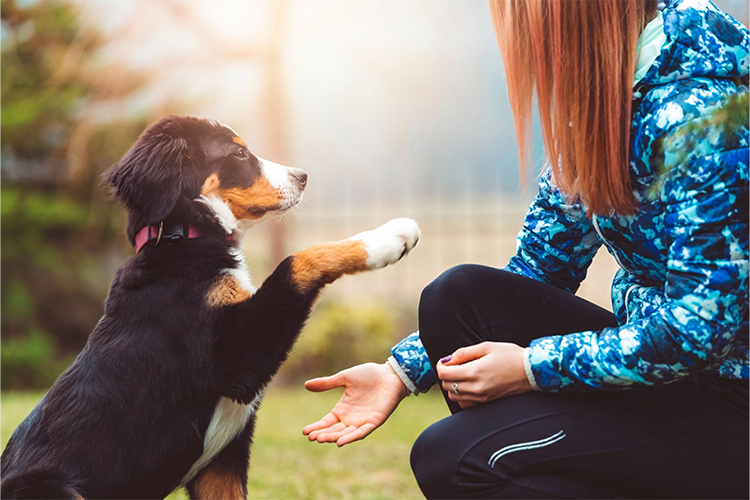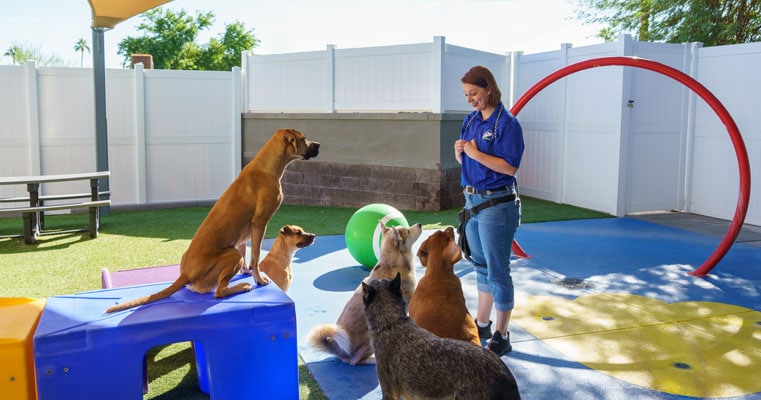Common Behavioral Issues and Their Solutions in Dog Training
Common Behavioral Issues and Their Solutions in Dog Training
Blog Article
Essential Tips for Effective Dog Training: A Guide for Pet Owners
Efficient dog training is a complex process that needs a calculated strategy tailored to both the pet's personality and the proprietor's goals. Recognizing just how to browse these challenges can substantially enhance the training experience, inevitably transforming the relationship between proprietor and pet.
Understanding Dog Actions
Comprehending pet habits is essential for effective training and promoting a harmonious connection in between pooches and their proprietors. dog training. Pets communicate mostly through body language, vocalizations, and activities, making it crucial for owners to translate these signals accurately.

Socialization plays a substantial duty in dog habits; direct exposure to different settings, people, and other pets can dramatically affect a pet's personality. Factors such as breed features and private personality need to assist training approaches, as some breeds might have details behavioral traits that demand customized techniques. By understanding these aspects, owners can create an encouraging environment that urges favorable behavior, leading to successful training outcomes and a much deeper bond with their pet dogs.
Establishing Consistent Commands
Reliable interaction with your pet dog begins with developing constant commands. This foundational element of training is essential for cultivating understanding in between you and your pet dog. Uniformity in the commands you make use of makes sure that your pet dog can reliably link specific words or expressions with the wanted behaviors.
When picking commands, select clear, distinct words that are easy to say and distinguish from one an additional. Stay clear of utilizing similar-sounding commands that may puzzle your pet dog. As an example, using "sit" and "stay" is proper, but "sit" and "hit" can bring about misconceptions.
Additionally, keep the very same tone and volume for every command. Pets are delicate to singing signs, so differing your tone can create complication.
It is equally essential to ensure that all household members are on the very same web page concerning the commands made use of. A united front in command use will certainly avoid mixed signals and reinforce the discovering procedure.
Favorable Reinforcement Strategies
The power of favorable support in dog training depends on its capacity to encourage desired behaviors through rewards and praise. This method is based in the principle that habits complied with by beneficial results are most likely to be duplicated. By incorporating positive support right into your training routine, you can effectively shape your canine's habits in a useful fashion.
To carry out positive reinforcement, it's necessary to identify what encourages your pet, whether it be treats, toys, or spoken appreciation. When your pet does a wanted activity, such as remaining on command, immediately compensate them with a treat or love. This organization in between the command and the positive outcome strengthens their understanding.
It's important to timing the rewards properly; providing the support within secs of the desired behavior aids your canine make the connection (dog training). In addition, uniformity is crucial-- make certain that all family participants make use of the exact same commands and incentive systems to prevent confusion

Progressively, you can reduce the regularity of treats as your canine learns the habits, transitioning to commend or recurring incentives. This method not only cultivates a strong bond in between you and your canine but additionally promotes a favorable discovering environment, making training a satisfying experience for both.
Socialization and Interaction
Constantly exposing your canine to a selection of environments, people, and various other pets is critical for their social development. Socialization should begin early, useful source ideally throughout the vital home window of 3 to 14 weeks, when pups are most receptive to brand-new experiences. Nevertheless, older pet dogs can likewise take advantage of continuous socializing initiatives.
Introduce your pet to various settings, such as parks, pet-friendly stores, and urban areas. This direct exposure aids them adjust to numerous stimulations, reducing anxiousness and anxiety responses. Encourage favorable interactions with various other canines and individuals, ensuring that these encounters are controlled and secure to foster self-confidence.
Make use of organized playdates with courteous pet dogs, as this can boost your pet's social skills and instruct them proper actions. Obedience classes and training sessions also offer outstanding opportunities for socialization, allowing your pet to interact with others in a monitored environment.
Monitor your canine's body movement throughout communications, as this will assist you determine their convenience level. Gradually enhance exposure to more tough circumstances while making certain that each experience is favorable. A well-socialized pet dog is most likely to exhibit balanced actions, making them a happiness to have in any kind of setup.
Dealing With Common Training Difficulties
Every dog proprietor will certainly encounter training obstacles eventually, no matter their pet dog's age or socializing level. Determining common concerns such as stubbornness, disturbances, and fearfulness can assist in creating reliable approaches for improvement.

Gradually introduce interruptions as the dog comes to be more proficient in commands. Short, frequent training sessions are also efficient in keeping interest.
Fearfulness can prevent a canine's learning process. Steady desensitization to the resource of worry, coupled with favorable reinforcement, can aid reduce anxiousness. Persistence is essential; never ever require a dog into a situation that triggers distress, as this may exacerbate the issue.
Eventually, understanding and resolving these typical challenges with a structured approach will certainly promote a more productive training experience, enhancing the bond in between dog useful reference and proprietor while promoting effective understanding.
Verdict
In summary, successful pet training relies upon a comprehensive understanding of canine habits, the facility of consistent commands, and the application of favorable support strategies. Socialization plays an important function in developing well-adjusted family pets, while resolving usual training challenges calls for patience and versatility. By applying these essential strategies, pet dog proprietors websites can promote a solid bond with their pets and advertise desirable habits, eventually leading to a harmonious connection in between humans and their canine buddies.
Recognizing pet actions is vital for effective training and cultivating a harmonious partnership in between canines and their proprietors.Socialization plays a considerable function in pet dog actions; exposure to various environments, individuals, and various other pets can significantly affect a dog's character.The power of positive support in canine training lies in its capacity to urge desired actions through benefits and appreciation. By incorporating favorable reinforcement right into your training program, you can efficiently shape your pet dog's behavior in a positive manner.
In recap, successful pet training counts on a detailed understanding of canine actions, the facility of consistent commands, and the application of favorable support techniques.
Report this page